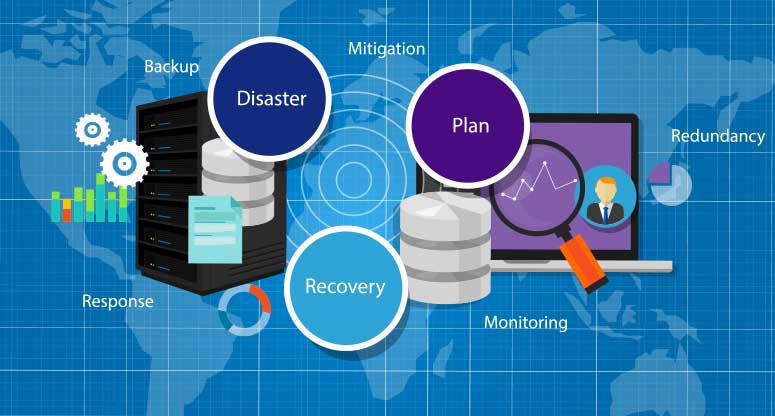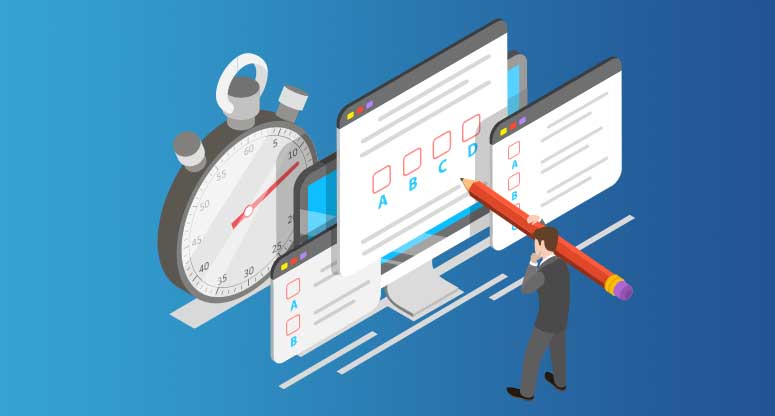Contact Center Operations Contact Center Security Contact-Center Outsourcing Customer Service Strategy Disaster Recovery6.5 minute read
How to Create a Business Continuity Plan that Works
A business continuity plan is an essential part of any company’s strategy. And while most business leaders understand the importance of continuity planning for businesses located in regions prone to natural disasters—a challenge that’s only escalated in recent years—what’s less commonly understood is that every business needs a continuity plan to ensure ongoing success in the face of disruptions.

But planning for the unexpected is an inherently challenging proposition. Beyond outside operational disruptions, your internal business processes also are prone to constant change. For instance, the shopping patterns of your customers can shift based on economic factors, such as stock market fluctuations and the occasional weeks-long federal government shutdown depriving millions of shoppers of their paychecks.
The bottom line? An effective business continuity plan needs to be responsive enough to allow for economic as well as weather-related disruptions—not to mention security concerns, including cyberattacks and labor-related concerns like flu outbreaks, among many others. And it needs to accomplish all this in a scalable way, offering the ability to adapt to a myriad of situations.
With that in mind, here are six essential factors to consider when creating your business continuity plan.
“An effective business continuity plan needs to be responsive enough to allow for economic as well as weather-related disruptions.” Share on X
How to Create a Business Continuity Plan: 6 Essential Considerations
1: Continuity Is Key
It’s right there in the name, yet still too often overlooked. But make no mistake: An effective business continuity plan requires giving full consideration to continuity of all communications and operations. That means that, no matter what adversity occurs, you need to make sure you maintain as much uptime as possible, while ensuring your customers experience an absolute minimum of disruption or downtime.

“Being able to handle any incident effectively can have a positive effect on your company’s reputation and market value, and it can increase customer confidence,” as CIO’s Kim Lindros and Ed Tittel point out. But the opposite of this is also true: A failure to react appropriately to setbacks could lose you customers and cause irreparable harm to your brand.
Being able to handle any incident effectively can have a positive effect on your company’s reputation and market value, and it can increase customer confidence
To this end, an effective business continuity plan needs to outline in detail how essential functions will be backed up and restored in the event of disruption. And this extends not just to your onsite functionality, but offsite, too. All of the third-party contractors, temp agencies, data-center providers and sources of power must be consulted and included in the plan.
2: Expand Your Focus
As many experts have pointed out, business continuity plans too often focus strictly on IT and physical infrastructure. As important as these factors are—and they are admittedly the most commonly affected elements when it comes to unexpected disruptions—there are other equally important elements that need to be included, such as HR operations and employee communications.
Understandably, businesses in disaster zones may hone in on specific risks like flooding or power failures. Planning for the unpredictable, however, means planning for other potential challenges. For example, imagine a breakout of the flu, and the potential effects of those challenges, like understaffing or the inability to respond to client inquiries.

The trick is to create a plan that’s flexible enough to be of use in a variety of potential disruptions, not just the specific risk that you may be able to foresee. In other words, as important as it is to be detail-oriented, it’s equally important that your plan allows for the big picture and not be overly complicated to exclude an effective response to a wide range of disruptions.
“Adopt a business continuity plan that allows for the big picture that allows effective response to a wide range of disruption.” Share on X
3: Carefully Consider Communications
Emphasizing the importance of extending your continuity plan to every corner of your business, a National Exam Program Risk Alert issued by the U.S. Securities and Exchange Commission in the wake of 2012’s disastrous Hurricane Sandy noted that many continuity plans “did not adequately address and anticipate widespread events.”
Specifically, these businesses experienced “inconsistent communications with clients and employees,” including the failure to create “adequate plans addressing situations where key personnel, such as portfolio managers, were unable to work from home or other remote locations.”
In other words, making sure your clients and employees are in the loop in the face of a potential disruption is absolutely essential. That means including a component if your business continuity plan that allows for regular and even pre-emptive communications to keep everyone in the loop regarding developments. These include automated messages delivered via voice mail, social media and other channels to let customers and clients know your status during every stage of the crisis.

It’s also important that these communications come from a consistent source. If you don’t have a designated team member that handles client communications—say, a media coordinator or public information officer—then it’s time to designate an existing team member with this responsibility. This individual should be tasked with contacting clients 24 hours before an incident (if possible), then maintaining as continuous communications as possible throughout.
And, as with any other element of your business continuity plan, make sure a backup team member is appointed to pick up any slack should your primary communications coordinator be unavailable at any point during the disruption.
How to Ensure Business Continuity in Your Communications Center
4: Keep an Eye on Regulatory Concerns
Just as important as maintaining operational processes and employee communications is keeping an eye on any potential regulatory violations that may be caused by disruptions. This is vital not just for maintaining whatever licensure you require to operate, but also for ensuring consumer confidence in a time of widespread concern of over data security.
“The risk of having an organization’s ‘license to operate’ withdrawn by a regulator or having conditions applied (retrospectively or prospectively) can adversely affect market value and consumer confidence,” as business continuity expert Lorraine O’Donnell told Lindros and Tittel. “Build your recovery strategy around the allowable downtime for these processes.”
Build your recovery strategy around the allowable downtime for these processes.
5: Test, Test, Test!
Testing your business continuity plan is an absolutely essential step to ensuring it will actually work the way you need it to, when you need it to. It’s impossible, of course, to predict exactly what will happen in an emergency, but by testing your plan on a regular basis—at least four times a year, most experts recommend—you can be as close as possible to knowing that you’ve got every detail accounted for in every possible scenario.

Though it’s important to schedule these tests during times of minimal impact for your regular operations, it’s equally important not to treat this step as an afterthought, but as a critical part of the continuity planning process. And this means approaching testing as a serious and essential exercise, and not as an onerous task to be carried out and then dismissed as quickly as possible.
Also, remember to tweak the scenario to accommodate a different situation every time you conduct a test, so that you truly know how your team will react at crunch time. If you repeat the same test each time, then your final business continuity plan is likely to be weak—and less effective—as a result.
6: Work on Continuous Improvement
All this testing helps make sure you’re ready to face a variety of scenarios, and also allows you to constantly revise your business continuity plan to make sure it’s always up to date.
And there are other reasons for continuously updating your plan: Technology is ever-changing. Team members will come and go. Your physical infrastructure could change (a bigger office, perhaps, or a new computer system). Your business footprint can evolve, with new customers in new markets. All of these factors need to be included in a continuously updated plan, as do the lessons learned from ongoing testing.
If creating such a plan sounds like an intimidating task, well, there’s a good reason why more and more businesses are choosing to outsource to experts like Working Solutions. With decades of experience helping businesses keep their communications and operations running as smoothly as possible with disruptions, we offer real-world expertise that helps ensure your business continuity plan leaves no detail unconsidered.

If you’re interested in learning more about how we can help you create and maintain a business continuity plan you need for success, there’s no time to lose.
Contact us.
This Might Interest You...
This website uses cookies to personalize and improve your experience. Continue browsing our site if you agree to our Cookie Policy or feel free to Manage Cookies yourself.


